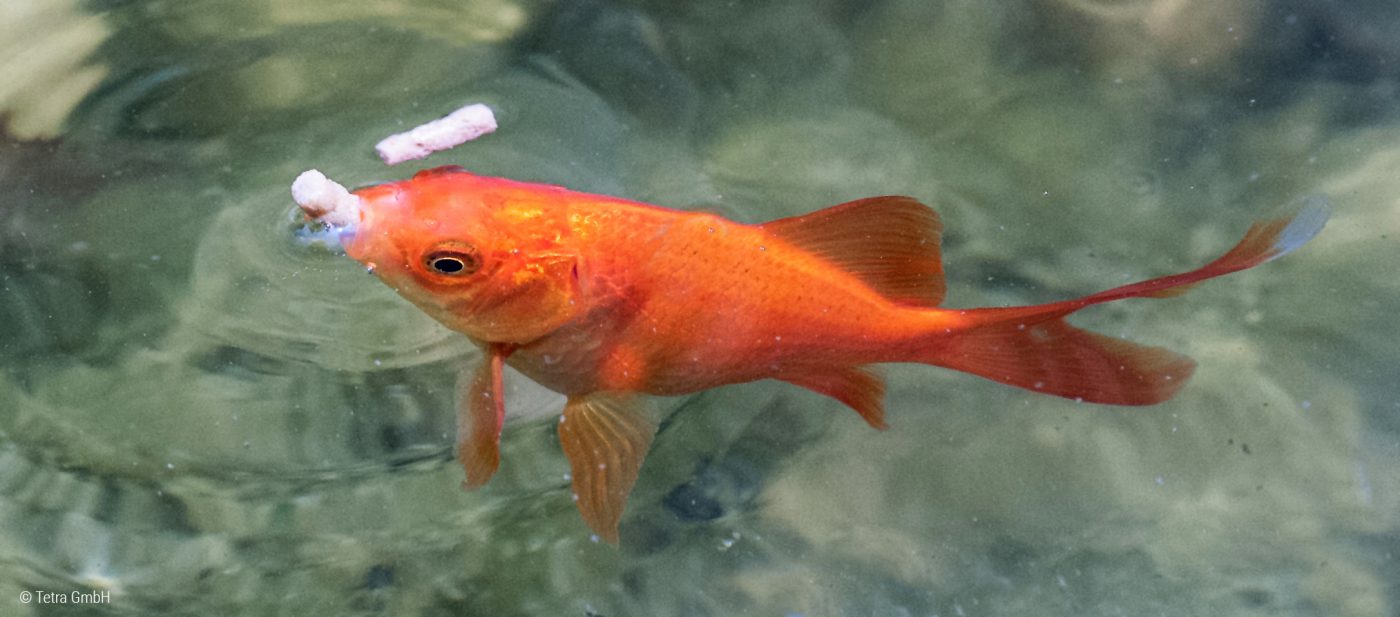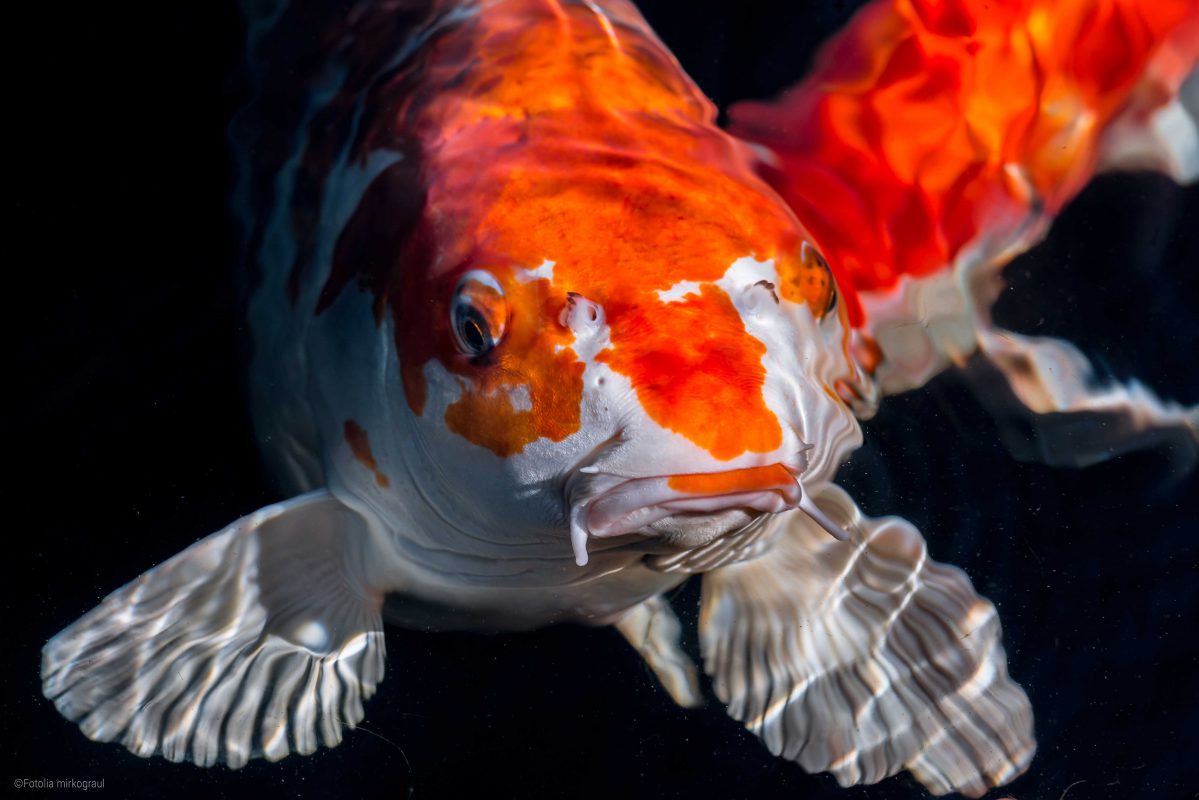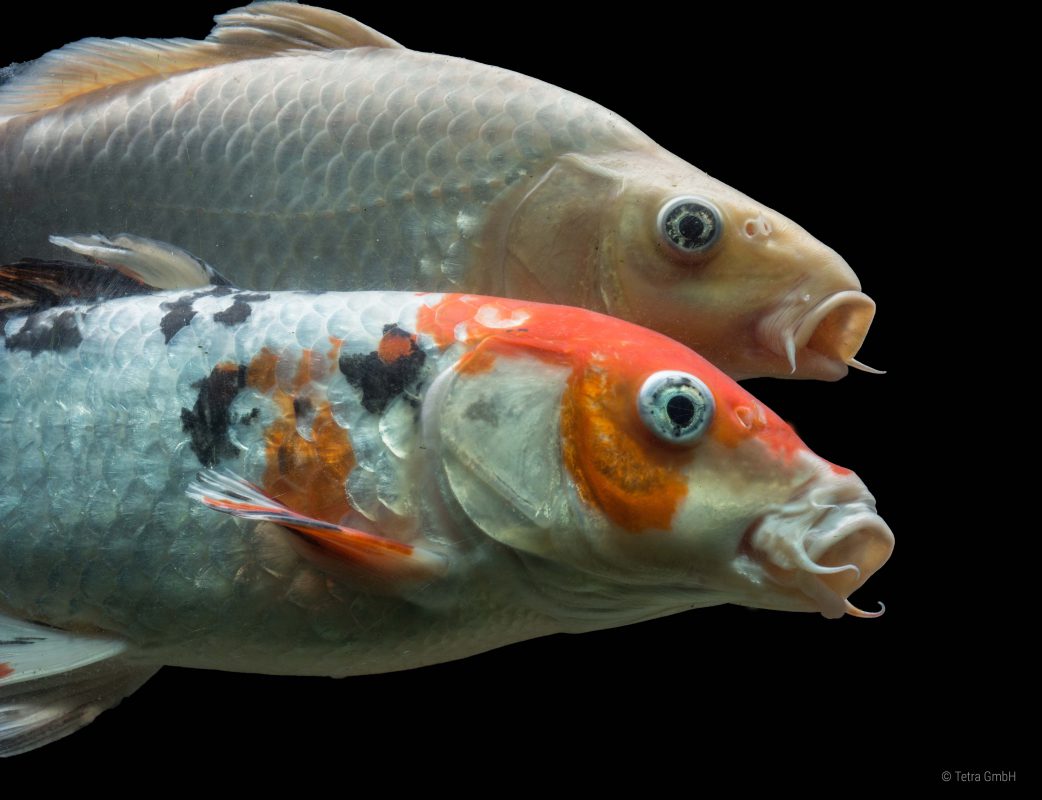History
Nishikigoi, the Japanese name for koi, are sometimes also referred to as “coloured carp” as they are a colourful variety of the common carp (Cyprinus carpio or Cyprinus rubrofuscus). The koi carp that we know and admire in our ponds today originally came from Japan, but the origin of their ancestors is not entirely clear.
After the last great ice age, wild carp lived in tributaries of the Black and Caspian Seas, the Sea of Okhotsk and the Aral Sea, thus covering a water system stretching from the Danube to China via Siberia.
The first written reference to koi in China dates back to well over 2,000 years ago – not as an ornamental fish but an edible fish. Nonetheless, koi or koi carp were already considered as symbolic fish at the time. According to Chinese history, the philosopher Confucius was presented with a koi on the birth of his first son and thus named his child Kong Li, which means “carp” and symbolises strength. In Japan, it was not until the 2nd century A.D. that koi/coloured carp were kept as ornamental fish in imperial courts.
In the 17th century, koi fish were used as a food source (particularly in the Japanese region of Niigata) to supplement the short food supplies during the long, harsh winters. The first real coloured varieties of this species that we now know as “koi” did not appear until the early 19th century. German mirror carp, inter alia, were subsequently cross-bred with Japanese koi, leading to the first “Doitsu” varieties. The koi breed attracted greater attention when it was officially presented at the prestigious Taisho exhibition held in Tokyo in 1915. In the 1950s, once relations had returned to normal after the end of World War II, the trend to keep and breed koi as ornamental fish resumed. Shortly afterwards, the first koi fish were delivered to the US and Europe, and before long this magnificent species took the world by storm.
Underwater habitat – What to take into account
Pond construction:
The location and construction of your pond should be well thought out. An optimum pond volume allowing for sufficient equipment is at least 1 to 3 m³ per koi, whereby the optimum pond depth is between 1.5 and 2.5 m maximum. Ideally, the pond should be located in a sunny spot to bring out the koi’s colour vibrancy, but at the same time there should naturally be plenty of shady areas.
Water quality:
The water should be as uncontaminated as possible with the best quality parameters so that your koi have the greatest chances of avoiding primary or secondary diseases due to poor environmental conditions. Koi feel most comfortable in warm water temperatures.
In winter, it goes without saying that your pond must be sufficiently frost-proof. You should check the key water values, such as the ammonia and nitrite levels, the carbonate hardness and the pH value, on a regular basis. An adequate carbonate hardness (KH) level ensures non-critical pH values. Therefore, the KH value should not fall below 3°dH, otherwise the pH value could soon become unstable. You should choose a suitable pond filter according to the size and stock of the pond, to keep your fish healthy in the long term. Carrying out partial water changes in your koi pond is obviously one of the key care measures, paying particular attention to the partial water change and sludge removal in autumn to prepare you pond for the winter.
Care during the Seasons:

Autumn
Autumn is the most important season for koi keepers because you need to care for your pond and fish properly in preparation for the winter to ensure problem-free hibernation and a healthy start in spring. In autumn, you should remove any foliage that has blown into the pond as well as any dead aquatic plants. When carrying out a partial water change, you should also remove sludge from the bottom of the pond, to reduce/prevent excessive organic water contamination and guarantee the best possible water quality for the hibernation period. You should also clean the technical equipment (e.g. the filter) properly and prepare it for winter.
In autumn, koi need to build up sufficient energy reserves for the winter. While the temperatures are still warm, you should feed them high-energy food to boost their energy stores. When the temperatures fall – particularly below 10°C – you should start feeding them really easy-to-digest Tetra Pond Wheatgerm Sticks.
Winter
Depending on the system and equipment you use, the filter system should be completely switched off in winter to prevent any frost damage. It’s also important to avoid vigorous water flow and recirculation in your koi pond. If your pond is heated, the water should only be warmed to prevent it from freezing. The water should remain sufficiently cold to prevent the koi from becoming active, as the hibernation period is an essential part of their annual cycle. If your pond is not heated, however, you should make sure that a small area of the water cannot freeze over so as to allow a regular exchange of gases between the pond water and the air. If, for example, you use a small pump for this purpose, make sure it is installed in a frost-proof shallow area so that it doesn’t recirculate the body of water and create water flows in the deep water regions where the koi hibernate.
Feeding should be minimal during winter. If koi want to eat of their own accord, you should always feed them Tetra Pond Wheatgerm Sticks. If, however, your koi remain at the bottom of the pond during hibernation and no longer come up to the surface, you should stop feeding them.
Spring
After winter, the transition to spring is a real endurance test for your fish. They aren’t necessarily in top form after hibernation as they have had to live off their reserves during the winter. As a result of the low temperatures, their immune system takes a while to start working properly so they might be very prone to disease. To start with, you should only feed them Tetra Pond Wheatgerm Sticks as they are very easy to digest. Once the temperatures start to rise above around 10°C, you should feed them high-energy koi food again, for example the Tetra Pond Koi Premium Mix.
In spring, it is particularly important to check all the water values. As soon as your koi are active again, you should carry out gentle partial water changes to offer them the best possible water quality. When the water temperatures start to rise again, biological filtering also kicks in once more. It’s crucial for the rest of the koi year that your fish get back into good shape as quickly as possible – and this is only possible if they are offered the right food and the best environmental conditions.
Summer
In summer, when the pond water is nice and warm and your koi’s metabolism is working perfectly, you can admire the full colour vibrancy of your very active koi. At this time of the year they are brimming with vitality and should be in the pink of health. They should be fed with normal, high-quality koi food, for example the Tetra Pond Koi Colour Pellets, as they no longer require any additional energy sources. However, pay attention to the amount of food you give you koi as they rarely show that they are full up and are capable of overeating.
But early summer also means spawning season. If your fish spawn, you should rinse the filter properly as and when needed during this period. It’s also particularly important to check the ammonia and nitrite values every day in order to spot any dangerous contamination that could soon arise due to the huge amount of sperm and eggs in the water. It is therefore also essential to aerate your pond well. We recommend keeping a close eye on your koi during the spawning season, as injuries can be a common occurrence. If the weather is hot for a long period of time, the water inevitably becomes very warm, which in turn causes low oxygen concentrations. In this case (and if you experience algae problems), you should aerate your pond during the night as well as during the day.
Popular varieties
Koi carp with their striking colours are called “Nishikigoi” in Japanese. There are over 150 different koi varieties, which can be classified in at least 15 main groups. The names of “Japanese koi” are traditionally made up of Japanese words. Good-quality Japanese koi sometimes cost several hundred euros, even when young, and the world’s most expensive koi sold for over 1.5 million euros. Generally, European-bred koi are less expensive but offer just as much enjoyment as their Japanese counterparts.

Kohaku
Kohaku have a white body with red markings. The red colouring should be even in tone and the edges of the red markings on the head and body should be crisp and clear against an unblemished white background. Yellowish skin and a completely red head and/or fins are undesirable. Kohaku have a medium to very good growth rate and can reach over 100 cm in length. Kohaku are among the Gosanke “Big Three”, making them one of the most popular varieties both in Japanese regions and worldwide. Well-known types of Kohaku include the Tancho, Ginrin, Doitsu, Kikusui, Aka Muji and Shiro Muji. Flawless koi win the highest awards and are rated among the grand champions.
Showa Sanshoku
Showa have a black body with red and white patches. A distinction is made between traditional and modern breeds, whereby the extent of the white markings plays a key role. Showa have a medium to very good growth rate, but rarely reach over 100 cm in length.
Desirable traits are strong and dynamic markings with a black patch at the base of the pectoral fin (motoguro) and a black V or Y-shaped pattern on the head. Premature development of the black markings is, however, undesirable. Showa are also among the Gosanke and therefore have great potential to become grand champions. Young Showa can be very expensive. The most popular Showa varieties include the Tancho, Ginrin, Doitsu, Kin and Hi.
Ogon
“Ogon” is the traditional name for metallic single-coloured koi, whereas metallic multi-coloured koi are called “Hikarimoyomono”.
Ogon are mainly white, yellow or red. They have a metallic sheen on their body and rarely grow to more than 75 cm in length. These koi varieties are often kept together with multi-coloured koi because their clear, uniform colouring radiates a certain calmness in koi ponds. Matsuba Ogon are particularly impressive and majestic, as the scales on their body give them a pine cone pattern. Popular varieties of metallic koi include the Yamato-Nishiki, Yamabuki Hariwake, Doitsu Yamabuki, Hariwake, Gin-Matsuba and Platinum Ogon.
Plants
Koi fish and aquatic plants do not generally go together very well. Koi see plants first and foremost as a food source – even if they don’t necessarily like their taste – and they often cause substantial damage to plants if they wish to eat them. Another argument against adding vegetation to koi ponds is that the fish also tend to dig or push up plants, especially young ones. Therefore, koi ponds are often very sparsely planted, if at all. If you nevertheless wish to maintain a beautifully planted koi pond in the long term, we recommend demarcating separate shallow areas, creating plant islands or using plant filters.
During growth periods, all plants remove undesired excessive nutrients from the water and therefore help to keep algae problems at bay. Plant filters (i.e. separate heavily planted areas through which the pond water flows) are a great way of ensuring mechanical and biological filtration as well as nutrient conversion, thereby guaranteeing an optimum biological balance and clear water. Planting vegetation in gravel around the edges of your pond not only looks great, but it also removes large amounts of pollutant substances from the water.

